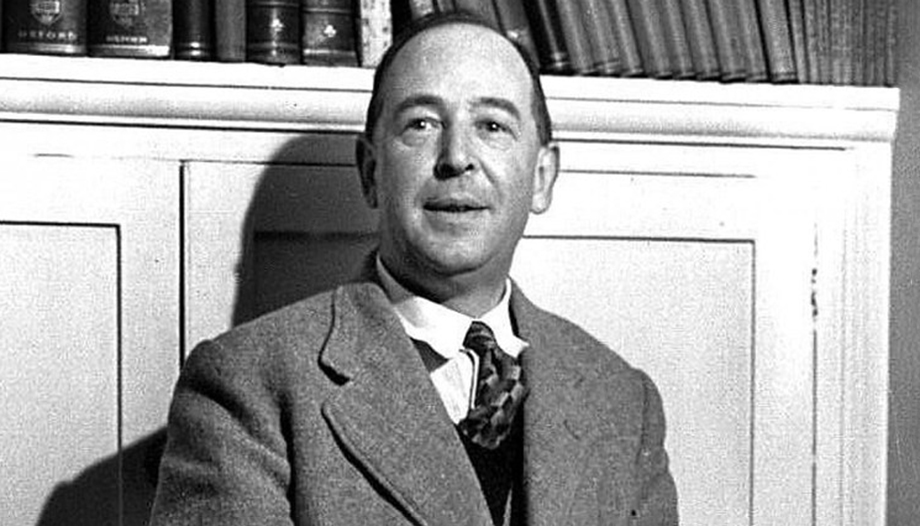The book Mere Christianity by C. S. Lewis, has accompanied many converts to the Christian faith. It approaches them and helps them to understand with originality and vividness the keys to the faith. It comes from a series of talks broadcast by the BBC during the first years of World War II (1941-1942), when England was left alone against Hitler's power and experienced the harshness of the conflict: aerial bombardments, sea blockade and maneuvers of the secret services; the defeats on the Continent, the displacements of thousands of people, the wounded and the dead.
It was necessary to mobilize not only the bodies but also the spirits. And the famous British company thought of a religious breath. Given the religious variety in Great Britain (Anglicans, Calvinists, Methodists, Catholics...) they preferred to avoid well-known clergymen.
The election went to C. S. Lewiswhich was (only) Fellow from Magdalen College (Oxford). C. S. Lewis had returned to the Christian faith at Oxford (1929-1931), was a practicing member of the Church of England and felt compelled to confess his faith. This did not always go down well in his academic environment. Perhaps that is why, at over 40 years of age, he was only fellow and did not get a professorship at Oxford but, much later, at Cambridge (1955). The public had been very pleased with some of his talks on The problem of pain (1941), with the pressing question: How can a good God permit so much evil?
The approach of the Mere Christianity
Three series of talks were broadcast. The first on the moral sense and the existence of God: Right and wrong as a key to understanding the worldthe second, on Christian behaviorthe third, on Beyond personality or first steps in the doctrine of the Trinity. They were a great success and many people were grateful for them in that very bad hour. He corrected and published them separately (1942-1944) and later he corrected them again and brought them together in Mere christianity (1952), mere Christianity or "Christianity without more".
The title alludes to what he had been asked to do: they had to serve all Christians without entering into controversy. To focus on what is valid for all, what is most Christian. This is the reason why he did not go into some topics (the structure of the Church or the Virgin Mary, for example). But he does go into the fundamentals, with the intention of rethinking them. Advising preachers once, he insisted that, if one is not able to translate the formulas he believes in others, he does not really understand them. And that is what he tries to do here, approaching the mentality of the common people and their difficulties in the face of certain themes: redemption, the Trinity, evil. He also wants to dismantle and reconstruct some clichés: "There must be something beyond", "Christ was ultimately (only) a moral teacher", "Christian morality consists in being honest citizens and avoiding some sins".
This effort of translation and rethinking is the basis of the originality and theological depth of C. S. Lewis. He did not feel himself to be a professional theologian and does not enter into too specialized topics. He is interested in those that a Christian must live. He does this with his eminent ability to present arguments synthetically by seeking intelligent examples. And so he has succeeded in making, in fact, one of the most significant works of 20th century theology. And a masterful text in many ways.
The contents
Although the series were independent, they are connected and are arranged in 4 "books" because the first series occupies the first two. It begins with the discovery of the true God, through a moral argument: the constant experience of the judgment of conscience on the good and the bad (right and wrong) (book I). It is followed by a description of the doctrine of redemption, centered on the reality of the fall of the human being and the mission of Christ (book II). The third book deals with Christian behavior, which quickly focuses on living in Christ united to his Church. And the fourth, is a quick and intelligent justification of the Trinitarian mystery and its history to move on to how the Christian can truly identify with Christ.
The war between good and evil, which appears here, will be developed later in his famous and brilliant Letters from the devil to his nephewpublished in the press throughout 1942. Mere Christianity The report includes, although it does not include quotations, some topics of The eternal man by Chesterton, which Lewis read in 1926, when he was approaching faith. For example, the importance of the original fall, but realistically addressed and not simply generally accepted. That it is untenable to defend that "Christ ultimately was a good person." as Christianity likes to think of itself as a "Christianity downgraded" or "...".watery"as Lewis says. In the Gospels the figure of Christ is too powerful and demanding to think of him only as a good person or a simple moral teacher. It is Lewis' famous trilemma, which is already in Chesterton. "You have to choose: either that man was and is the Son of God, or he was a madman or something much worse." (II, 3 in fine). Also the idea that, if it is true that God is love, he cannot be a solitary God waiting to create someone to love; a subtle and, at the same time, profound and effective reflection on the Trinity.
The moral law
Right and wrong is the proper translation of the title of the first "book" (Right and Wrong) by adding "as a key to understanding the universe". When Lewis writes, the moral argument for the existence of God was intellectually discredited as ineffective and inconclusive (in theory). But Lewis is a keen observer, as well as a convert. And he notes how deeply rooted in human life is the appeal to right and wrong. We human beings constantly appeal to our rights and complain about offenses and injustices. No one can complain about anything if there is no right. By complaining, with that same force, we acknowledge the existence of a moral law and order that we did not invent and that someone had to put in place. Demonstration is as valid as complaint, to the same extent.
Beliefs
What Christians believes is the title of the second book and the second part of the first series of talks. First he presents the possible variants on God: between atheism and believing in a God; and between believing that everything is God (pantheism) or believing that everything is not God and there is a Creator distinct from the world. Depending on the cases, evil can be understood or not. If there is no God, there is no evil, only in a relative way. But if everything is God, there is no evil either. Evil properly speaking only appears when there is a good God, but this poses a problem: how does a good God allow evil, which is then so evident (the horrible war). It is necessary to remember that God has created us free beings, and if we are really free, we can be right or wrong, want what God wants or not want it.
The reality of the fall, stupendously presented, means that the world is a "enemy-occupied terrain"which needs a rescue that is far from easy. This rescue is carried out by Jesus Christ, disembarking in this world, incognito. What has been a brutal breakdown of the obedience due to God finds its solution in a full obedience up to the death of the Son, ("the perfect penitent") that opens a path. The way of identifying with Him in order to be a son in the Son and to fulfill the will of the Father. It is notable that Lewis insists much on this real identification as the only way to live authentically Christianity, which is not a moralistic, a set of norms of well-thought and educated people.
"People often wonder when the next step in man's evolution will take place: the step toward something beyond the human. But for Christians that step has already been taken. With Christ a new kind of man and the new kind of life appeared." (at the beginning of II, 5). And this life, which is received through Baptism, doctrine and the Eucharist (the Supper), is lived corporately in the Church. Christianity cannot properly be lived in solitude. Each one is socially "incorporated" into Christ.
Christian behavior
Book III is devoted to presenting the Christian life while at the same time dismantling the collection of popular clichés about morality. He begins with an intelligent presentation of the parts of morality. He chooses, among others, the example of a squadron of ships. It is necessary that they be orderly and not collide with each other, but also that each ship be internally well (otherwise they will end up colliding), and that the squadron as a whole knows where it is going. There follows a brief presentation of the seven virtues, cardinal and infused, which is what makes each one work. And a presentation of social morality, insisting that the Christian message has no fixed options in the temporal sphere, that it is not appropriate to expect clerics to intervene and that it is a matter for the laity to do well.
Sexual morality is treated with great wit and seriousness. He uses a comparison with eating behavior to put, with common sense, many things in their place. Remember that Christianity is almost the only religion that appreciates the human body to the extent that we believe in the resurrection and the Incarnation of Christ.
It is evident that in the disorder of our concupiscence there is a disorder of sin and a struggle to lead. But also that it is not the worst sin because it affects much deeper spiritual sins, such as pride and hatred. We can tend to live like animals or like devils, but the latter is much worse.
Then comes a quick and effective treatment of marriage, focusing on the value of commitment. And a review of faith, hope and charity.
Beyond personality
This is the title of the fourth "book" with its eleven points, corresponding to as many talks on the radio. Like the whole book, it contains a lot of interesting things. It begins with a vindication of the current importance of theology ("if you don't know, it's not that you don't have theology, it's that you will have a lot of wrong ideas lodged in your head."). And a distinction between begetting and making, which is the key to initiation into the mystery of the Trinity, when we distinguish how the Son has been begotten from all eternity and creation has been made in time. Moreover, each of us has already been created, but needs to be begotten to the life of grace. And to pass from the natural and biological life (which he calls the life of grace) to the life of grace. Bios) centered on our own ends to the life of God (Zoé), which is a living in Christ by the Holy Spirit. And this idea is gaining strength throughout this part.
Lewis' clarity about the Holy Spirit is striking: "Everyone likes to repeat 'God is Love,' but they do not seem to realize that the words 'God is Love' have no real meaning unless God contains at least two Persons (...). If God were a single Person then, before the world was created, God was not love (...). What emerges from the joint life of the Father and the Son is an authentic Person (...). Perhaps some find it easier to start with the third Person and proceed backwards. God is Love and that Love is spread through men, and especially through the whole Christian community. But this Spirit of Love is, from all eternity, a Love that is given between the Father and the Son." (IV,4).
He concludes: "At first I said there were Personalities in God. Now I go further, there are no authentic personalities anywhere else. Until you have surrendered your being to Christ you will not have an authentic being (...) How monotonously alike are the great conquerors and tyrants; how gloriously different are the saints. (...) Christ will certainly give you an authentic personality but you must not go to Him for that alone (...) The first step is to try to forget your own being altogether (...). The first step is to try to forget your own self completely (...) Seek yourselves and in the long run you will find only hatred, loneliness, despair, fury, ruin and decay. But seek Christ, and you will find everything else.".












